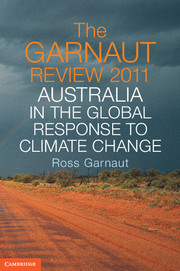Book contents
- Frontmatter
- Contents
- Preface
- Introduction
- PART I THE GLOBAL SHIFT
- PART II AUSTRALIA'S PATH
- Chapter 5 Correcting the great failure
- Chapter 6 Better climate, better tax
- Chapter 7 The best of times
- Chapter 8 Adapting efficiently
- PART III AUSTRALIAN TRANSFORMATIONS
- Chapter 12 Choosing the future
- Notes
- Acknowledgments
- Index
Chapter 5 - Correcting the great failure
Published online by Cambridge University Press: 05 January 2012
- Frontmatter
- Contents
- Preface
- Introduction
- PART I THE GLOBAL SHIFT
- PART II AUSTRALIA'S PATH
- Chapter 5 Correcting the great failure
- Chapter 6 Better climate, better tax
- Chapter 7 The best of times
- Chapter 8 Adapting efficiently
- PART III AUSTRALIAN TRANSFORMATIONS
- Chapter 12 Choosing the future
- Notes
- Acknowledgments
- Index
Summary
After the long, slow slide in the national wealth rankings that characterised much of Australia's 20th century economy, our century of protectionism ended in a series of measures undertaken from 1983.
The move coincided with a similar shift in China. And it was followed within a decade by several Southeast Asian economies, and more ambivalently (but in the end decisively) by India and by the collapse of the Soviet Union. Within a stunningly brief historical period, the world had its first truly global economy since the 19th century.
Australians did not want to join this global movement. No Australian industry wanted to be pushed from the safety of local conditions into the tough world of great and unknown competitors. But once the barriers were down, a remarkable reinvigoration happened. Australian productivity surged.
All exports grew strongly, but were led by an extraordinary range of goods and services, many embodying high intelligence and skills. Manufacturers, services and raw materials producers all flourished in unexpected ways. Education moved from being an inward-looking home industry to the top ranks of our export industries. Australian firms established dominant global positions in niches as diverse as insurance (QBE), infrastructure finance (Macquarie), blood products (CSL), cardboard boxes (Amcor), shopping malls (Westfield), travel publishing (Lonely Planet) and surf clothing (Billabong).
The wonders of the free market, and the inspiration, energy and hard work of the Australian private sector, took businesses to global success that neither politician nor bureaucrat could have picked.
- Type
- Chapter
- Information
- The Garnaut Review 2011Australia in the Global Response to Climate Change, pp. 67 - 76Publisher: Cambridge University PressPrint publication year: 2011

